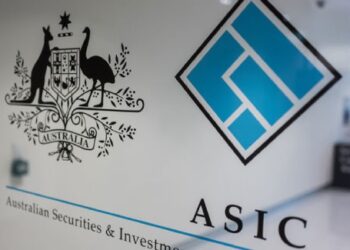ATO ID 2008/139 was withdrawn late last week. It was released in 2008 and related to the CGT small business concessions.
Speaking to SMSF Adviser, AMP SMSF’s head of policy, technical and education services, Peter Burgess, explained that for the purposes of determining whether or not an entity qualifies for the small business concessions, an entity is considered to be connected with another entity if either controls the other in certain ways.
For example, an entity is considered to control a discretionary trust if a trustee of the trust acts, or could reasonably be expected to act, in accordance with the directions or wishes of the entity, its affiliates or the entity together with its affiliates, Mr Burgess said.
ATO ID 2008/139 said if the trust deed of a discretionary trust specifies that the appointer of the trust has the power to remove a trustee and appoint a new trustee, it is considered that the trustee could reasonably be expected to act in accordance with the directions or wishes of the appointer, Mr Burgess said.
“However, the ATO has now withdrawn this interpretative decision because the Commissioner’s view is that the ability of an appointer of a discretionary trust to remove the trustee and appoint a new one does not, of itself, mean the appointer controls the trust for the purposes of the small business concessions. Whether an entity controls a discretionary trust depends on the particular facts and circumstances,” he said.
Mr Burgess noted the SIS Act also has a control test in it, and that test applies to in-house assets, which are clearly relevant to SMSFs.
“That control test is very similar to the control test that is used in a CGT section. So it’s reasonable to conclude that if the ATO is taking that approach in this particular section of the Act, the CGT concessions, that they would apply a similar approach to the control test in the SIS Act, which is worded very similarly,” Mr Burgess said.
“Under the in-house asset rules, if an SMSF invests in a trust which is controlled by a member or related party, unless the trust satisfies the requirements of SIS Regulation 13.22C, the investment will be considered an in-house asset of the fund.
“If you have an SMSF that might be investing in a trust, in order to determine whether that’s a related trust, if the member has the power to remove the trustee of the trust and appoint a new one, it doesn’t automatically follow that they control that trust, and therefore it’s an in-house asset.
“Off the back of this interpretative decision there has been some suggestion that if the trustee has the power to appoint or remove the trustee then they are considered to control that trust, and therefore if their SMSF invests in that trust, then it will be an in-house asset of the fund. What I’m suggesting is that’s not necessarily the case. By virtue of the Commissioner’s decision to withdraw this interpretative decision, that on its own is not sufficient to say they control the trust.”



I agree with the comment by Eagle Boy – subsection paragraph 70E(2)(c) in the SIS Act expressly provides that a [member] controls a trust if [the member] is able to remove or appoint the trustee
Unfortunately, the SIS definition specifically includes someone with the power to appoint or remove a trustee as essentially being a controller… There is no interpretation required as it is black and white in the legislation…